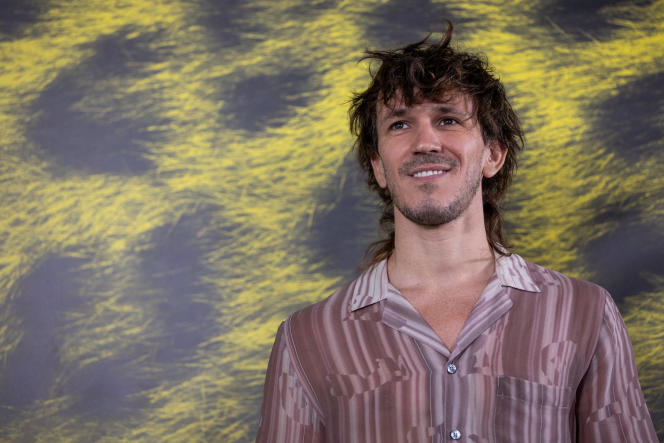In the cinema, there are what are called – sometimes hastily – “festival films”: extraordinary nuggets that delight moviegoers, are sometimes awarded, have a career in orbit in other events , on the other side of the planet, but do not necessarily come out in theaters. Unless word of mouth has its effect. In competition at the Locarno International Film Festival (Switzerland), including the 76e edition ends Saturday August 12, The Human Surge 3 (El trough del humano 3), a visual feat by Argentinian Eduardo Williams, shot with a 360-degree camera, promises to be a successful trilogy.
However, it is not so, the film is waiting for its distributor, reveals, smiling, the thirty-year-old filmmaker with a vintage look, old pink shirt and dark glasses. We met him at the café of the Teatro Kursaal, one of the festival HQs, on Wednesday August 9, before the screening of the film. There was indeed a first part, The Human Surgeselected in 2016 at Locarno, winner of the Golden Leopard in a parallel selection (Filmmakers of the Present). The distributor Shellac had released it online in the spring of 2020, at the start of confinement. ” There was no The Human Surge 2I went straight from 1 to 3, like a blockbuster parody”explains, with self-mockery, the director.
Born in 1987 in Buenos Aires, trained at the Universidad del Cine in this same capital, then at Le Fresnoy, in Tourcoing (North), Eduardo Williams recounts his career as an experimental author without ever citing the slightest reference. As if not to exclude the public: “I welcome all interpretations of my films by viewers. There is no single answer to the mystery of certain scenes”, he warns, in the preamble.
An “intuitive approach”
He claims a “intuitive approach” and delivers, for this purpose, a childhood memory: “When I was little, with my grandmother, I went to big cinemas in shopping centres. After the screening of a film that I had liked, I had the physical and mental sensation of seeing things around me differently. As if reality were no longer the same. Only the cinema put me in this state, and I could not explain it. In the cinema that I make today, there is always a link with these first emotions., he said.
In the filmmaker’s films, one sometimes wonders if the image comes from a surveillance camera or if it flies over the landscape thanks to software that assembles aerial images, such as Google Earth. What Eduardo Williams likes most is to use different mediums to try to “rethinking the framework”. One thinks of Dziga Vertov (1896-1954), the Soviet avant-garde filmmaker, author of The man with the camera (1929), but since our interlocutor does not want to cite his sources of inspiration, we pack up.
You have 46.64% of this article left to read. The following is for subscribers only.
